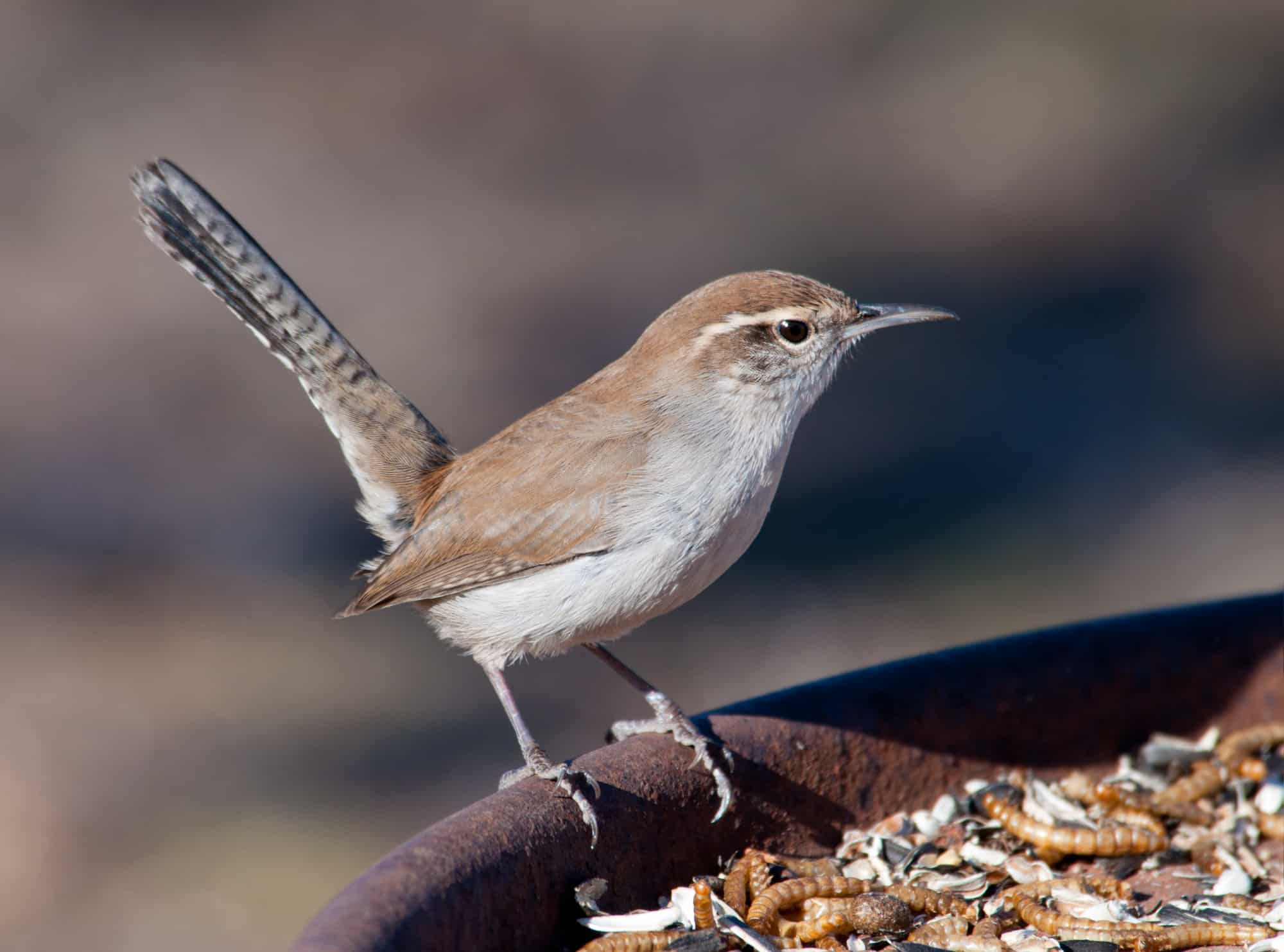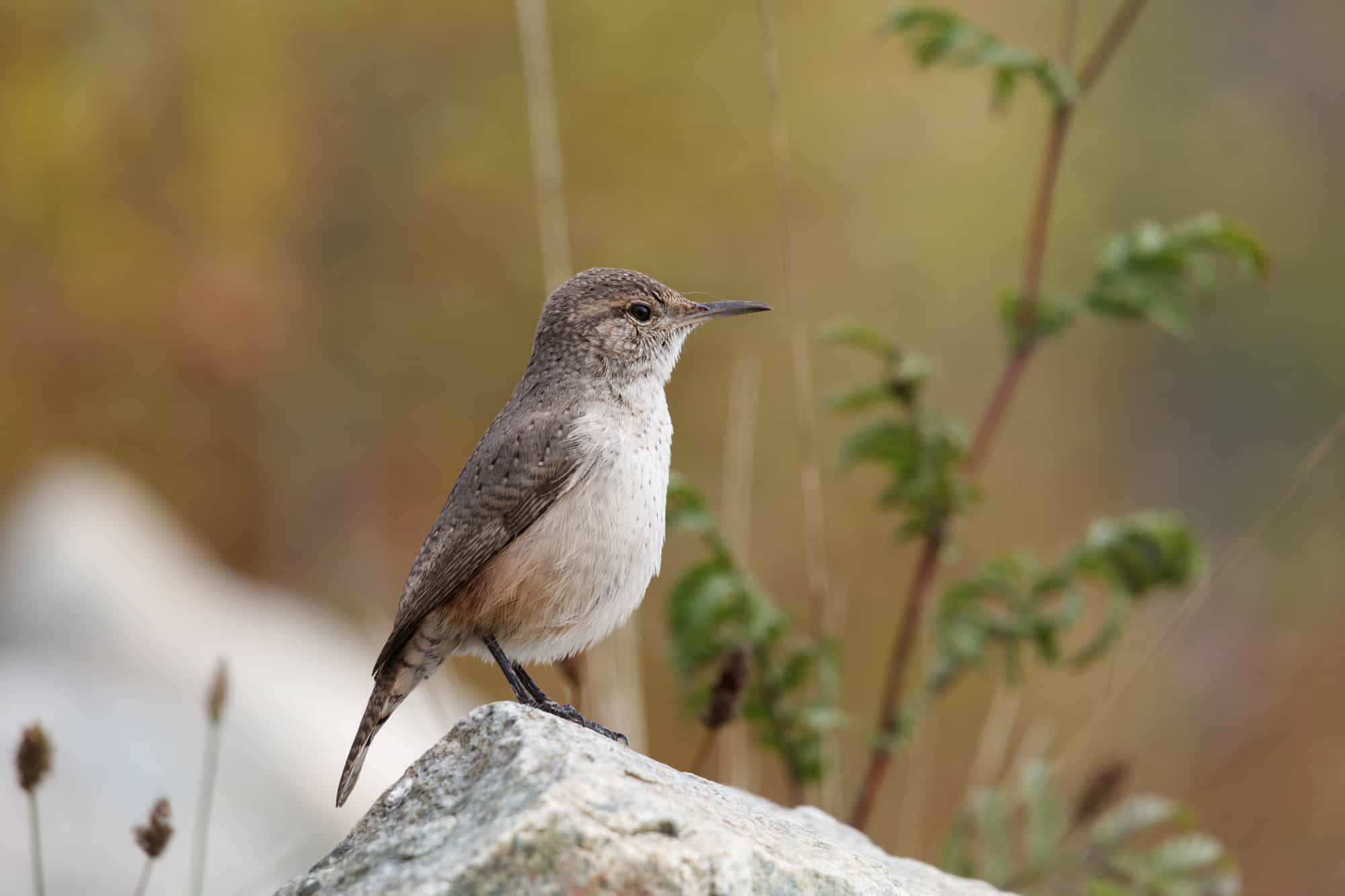With its hot, sticky climate, Florida offers a singular wildlife habitat in North America and a unique experience for the birdwatcher. While many migratory birds take advantage of the mild winters in Florida, others remain here year-round.
Of the 11 wren species in North America, more than half of them have been seen in Florida. That’s not to say that most wrens are commonly seen here, however.
There’s only one species that’s regularly seen here year-round, and a couple of species are only considered accidental in The Sunshine State. Rather than attracting certain species, the hot climate seems to deter some wrens that are only ever seen in the northern fringes of the state.
No matter which species of wren you encounter though, it’s usually an enchanting experience. Their tiny size combined with their booming voice and larger-than-life personality makes wrens a favorite for many bird lovers.
So let’s get to know Florida’s wrens, when and where you can see them, and how you can attract some of them to your backyard, too.
Wrens in Florida, Starting With the Most Common
Carolina Wren

- Scientific Name: Thryothorus ludovicianus
- Length: 4.7-5.5 in (12-14 cm)
- Weight: 0.6-0.8 oz (18-22 g)
- Wingspan: 9 in (23 cm)
The Carolina wren is the most common wren in the Eastern USA and the only wren that’s frequently found in Florida throughout the year.
While most wrens migrate north to breed during the warmer months, the sedentary Carolina wren prefers to remain in the same territories throughout the year.
Beautiful little birds, Carolina wrens have long white eyebrows, a white throat, and a pinkish breast. With a wingspan of 9 inches, they’re also one of the largest wrens in North America (second only to the cactus wren).
You can attract Carolina wrens to your backyard by offering them an appropriate nestbox. They may also occasionally accept food at platform bird feeders and tube feeders during the winter months, too!
House Wren

- Scientific Name: Troglodytes aedon
- Length: 4.3-5.1 in (11-13 cm)
- Weight: 0.3-0.4 oz (10-12 g)
- Wingspan: 5.9 in (15 cm)
House wrens are the second most commonly seen wren in Florida but can only be seen in the state during the colder months. Unlike their cousins the Carolina wren, house wrens are migratory and only breed between Northern Georgia and Middle Canada in North America.
Interestingly, though, house wrens can be found throughout South America too, where they remain more sedentary. Their massive distribution makes them the most widespread native bird in all the Americas!
Much slimmer and slighter than the Carolina wren, the elegant house wren only weighs about as much as a plastic pen! Their entire body is different shades of brown and gray, with subtle barring on their wings and tail.
House wrens don’t visit backyard feeders, but you can still attract them to your garden by offering them overgrown weedy corners with some brush piles where they’ll love foraging about for insects and spiders.
Marsh Wren

- Scientific Name: Cistothorus palustris
- Length: 3.9-5.5 in (10-14 cm)
- Weight: 0.3-0.5 oz (9-14 g)
- Wingspan: 5.9 in (15 cm)
Aside from the Carolina wren, the Marsh wren is the only other species that can be seen in Florida in the summer months. Whereas most marsh wrens migrate to the northern states for nesting, two subspecies remain here all year.
Marian’s marsh wren can be found year-round along the coast in Southeastern Florida, and Worthington’s marsh wren inhabits the tidal marshes from St.Mary’s to St.John’s River.
Although most wrens have a reputation for being fierce and feisty, the marsh wren takes the prize for being the most assertive of them all.
Listen out for their shrill battle cry, warning other birds to stay away from their territory!
Sedge Wren

- Scientific Name: Cistothorus stellaris
- Length: 3.9-4.7 in (10-12 cm)
- Weight: 0.3oz (7-10 g)
- Wingspan: 4.7-5.5 in (12-14 cm)
A close relative of the marsh wren is the sedge wren. While they’re one of the rarest wrens in America, Florida’s mild climate offers a popular winter refuge for these tiny, slender birds.
Apart from being noticeably smaller, a key difference between the marsh wren and sedge wren is that sedge wrens occupy slightly drier habitats than their cousins.
Whereas marsh wrens remain almost exclusively among vegetation in standing water, sedge wrens are happy in the upper edges of a wetland, or even in a damp field.
Neither species, however, is often seen in backyards, so a special trip may be required to spot them. Listen out for the sedge wren’s sharp calls when they’re flushed out of their sedge grass habitats.
Winter Wren

- Scientific Name: Troglodytes hiemalis
- Length: 3.1-4.7 in (8-12 cm)
- Weight: 0.3-0.4 oz (8-12 g)
- Wingspan: 4.7-6.3 in (12-16 cm)
And the prize for the smallest wren in North America goes to… the winter wren! At just 4 inches from tip to tail, these little critters measure about the same width as an average-sized adult’s hand.
The longer story is that the winter wrens share this honor with their Western cousin the Pacific wren, which until recently was thought to be the same species. These two species also have one of the most complex and impressive voices of any songbird in America.
Asides from their assertive song, however, winter wrens are rather secretive birds that like to scuttle about among the undergrowth in damp woodlands. Their Latin name ‘ Troglodytes’ meaning ‘hole dweller’, gives us another clue about their preferred habitats.
Winter wrens rarely venture as far south as Florida, but if you live in the north of the state, you might just see them roosting in nest boxes to stay warm during the winter.
Bewick’s Wren

- Scientific Name: Thryomanes bewickii
- Length: 5.1 in (13 cm)
- Weight: 0.3-0.4 oz (8-12 g)
- Wingspan: 7 in (17.8cm)
Although Bewick’s wren is one of the most common species in the Western States, they seldom travel this far to the Southeast. They are, therefore, considered accidental in Florida.
Although they were never common in Florida, Bewick’s wren populations have been declining in the Eastern US for many decades.
Neighboring Alabama bird watchers report that this bird’s population may have declined more than any other. It’s thought that competition from house wrens may be partly to blame for their demise.
Because confirmed sightings of Bewick’s wrens in Florida only occur once a decade or so, be sure to report even a suspected sighting to a local birding authority, such as the Florida Fish, and Wildlife Conservation Commission.
Rock Wren

- Scientific Name: Salpinctes obsoletus
- Length: 4.9-5.9 in (12.5-15 cm)
- Weight: 0.5-0.6 oz (15-18 g)
- Wingspan: 8.7-9.4 in (22-24 cm)
It was a tough call whether to include rock wrens on our list for wrens in Florida. They were last seen in the state in 1983, so can’t be considered a true resident here, but may be seen again.
These larger wrens have a light grayish color, a speckled chest, and a long bill. They’re often seen bouncing up and down while singing from their rocky abodes.
Rock wrens are one of the rarer wrens in North America, and their populations are normally confined to The West, so it’d certainly be surprising to see one in Florida.
These migratory birds do drift around, though, and can be seen from Central America to Alaska. Surely one will turn up in Florida again one day, but you’d be extremely lucky to spot one here!
Conclusion
Of the 7 wrens in Florida, only two of them are regularly seen, and two are incredibly rare. If you’re a local here, you can boost your chances of frequent encounters with wrens by offering them suitable birdhouses, for habitation during summer and winter.
Although Florida appears to be too warm for the preference of certain types of wren, it’s one of America’s greatest birdwatching hotspots. A whopping 500+ bird species have been recorded in the state, and we explore the best of them in our Guide to 26 Iconic Birds of The Sunshine State.

